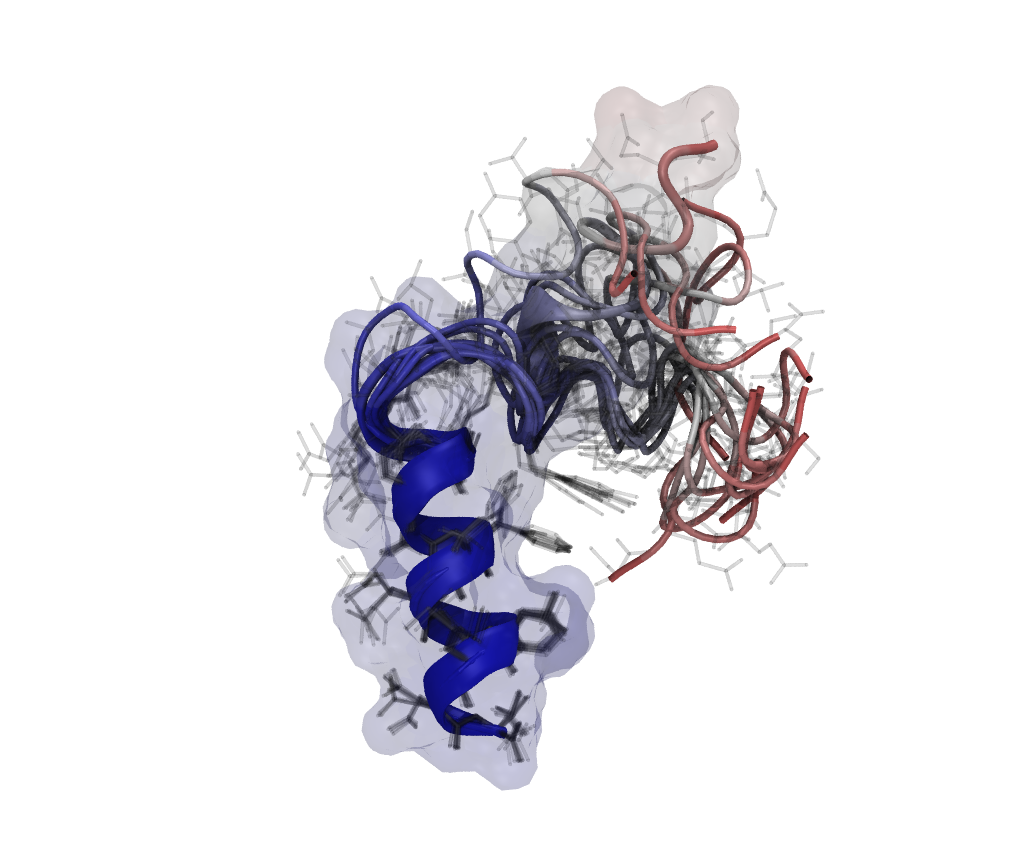Mathematical models
The researchers of the Mathematical modeling group employ a wide range of modeling techniques -- from the organism scale (pharmacokinetics and beta-cell models) to the single-molecule one (large-scale molecular dynamics simulations) -- to investigate the mechanisms of action of current- and next-generation T2DM treatments and support the development of drugs against the diabetes epidemics.
Insulin and other hormones such as glucagon, glucagon-like peptide 1 and homologs are implied in the regulation of glucose metabolism, and synthetic mimetics of these peptides are among the most interesting drug candidates for improving the treatment of type 2 diabetes (T2DM). A focus area of the group has been the glucose-insulin homeostasis system, a field in which several modeling methodologies have been developed and applied to the study of the pathophysiology of diabetes and its complications, obesity and other metabolic disorders, and the computational characterization of molecular processes. Algorithms for the assessment of insulin sensitivity and beta-cell function from simple tests, both in humans and in experimental animals, have been remarkably successful, and are currently employed in the clinical practice. Other fields of research include glucose monitoring, dialysis, computerized electrocardiography, and processing of myoelectric signals for the realization of robotic exoskeletons.
glucagon, glucagon-like peptide 1 and homologs are implied in the regulation of glucose metabolism, and synthetic mimetics of these peptides are among the most interesting drug candidates for improving the treatment of type 2 diabetes (T2DM). A focus area of the group has been the glucose-insulin homeostasis system, a field in which several modeling methodologies have been developed and applied to the study of the pathophysiology of diabetes and its complications, obesity and other metabolic disorders, and the computational characterization of molecular processes. Algorithms for the assessment of insulin sensitivity and beta-cell function from simple tests, both in humans and in experimental animals, have been remarkably successful, and are currently employed in the clinical practice. Other fields of research include glucose monitoring, dialysis, computerized electrocardiography, and processing of myoelectric signals for the realization of robotic exoskeletons.
The mathematical modeling research group, active since the 80’s, has a background in biomedical engineering, and has developed over the years strong links with departments of physiology, internal medicine, endocrinology and nephrology.
| Roberto Bizzotto |
Gaetano Chemello | Stefano Secchi |
| Andrea Tura | ||
| Andrea Mari (Associate) |











